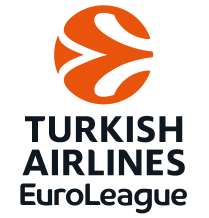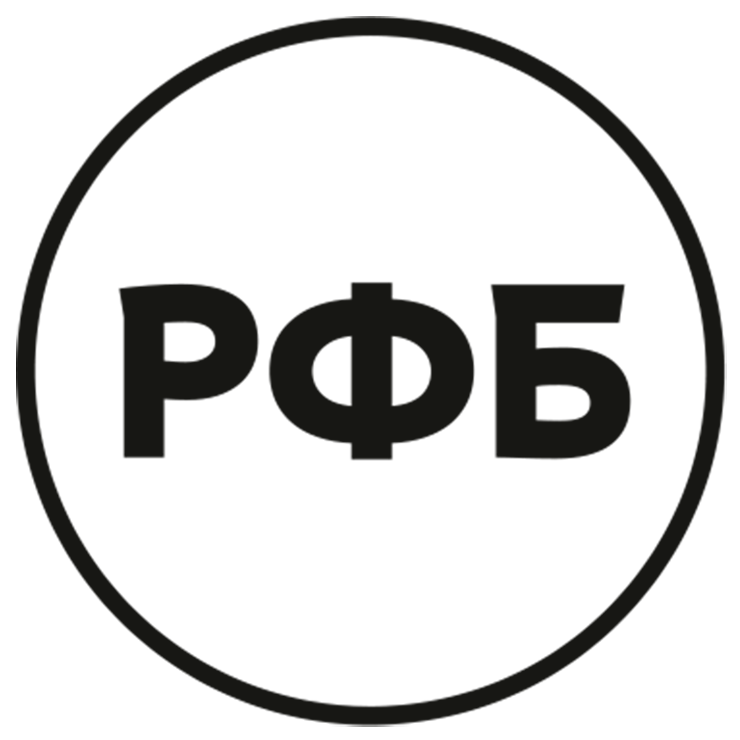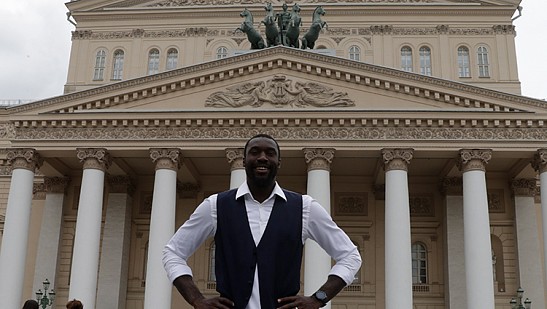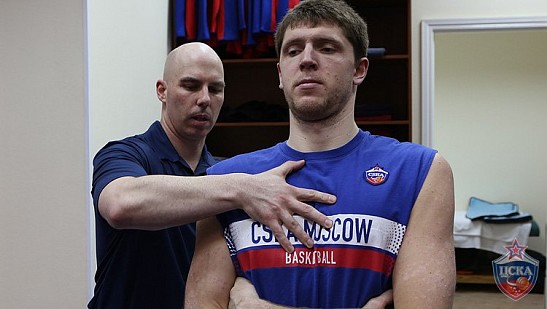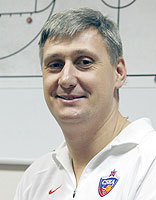The court and player positions
29.01.2007
Today we start the new theme on our web site. The goal of it is to tell to our supporters who do not have special basketball knowledge a bit about the game. In order to make the explanations more professional we will make it with the help of CSKA coaching staff. We will start with the topic "Basketball court and player positions" by Evgeny Pashutin...
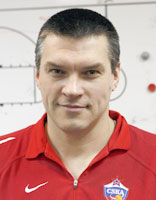
Today we start the new theme on our web site. The goal of it is to tell to our supporters who do not have special basketball knowledge a bit about the game. In order to make the explanations more professional we will make it with the help of CSKA coaching staff. We will start with the topic "Basketball court and player positions" by Evgeny Pashutin.
One shot in basketball can cost from 1 up to 3 points. It depends on the place where the shot was taken. The shot from behind the three-point line that lies 6 meters away from the basket costs 3 points. The shot from any place within the line costs 2 points. One point can be scored from the special free-throw line but the shot would be taken without opponent side resistance. It is awarded after a player is fouled in the act of shooting.
The name of the zone under the basket that is filled with the contrast color is the paint. The player of the team that has the ball (offensive) can stay there without the ball no longer than 3 out of 24 seconds. Otherwise the ball would be given to the other team.
The court is limited by the base and the side lines. In case any team violates the line the other team would have the ball. Another line – the central – divides court into two parts. In each possession the team should leave this own part of the court in 8 seconds and should not let the ball to cross the line once more.
Another zone of the court is the central round. In here the first action of each game takes place.

Except to the zones marked with the lines there are several other places on the court that have the special names. Most of them do not have the exact translation into Russian so we will use them in English.
Corner – the part of the court formed by the sideline and the baseline
Wing – the area inside the three-point line, halfway between the corner and the free throw line. In Russian also exist an expression ‘by 45’, this means the area but not limited by three-point line.
Point – the spot at the top of the key, stretching back almost to the center circle
High post – the area surrounds the free-throw line
Low post – two areas on either side that are even with the hoop
Perimeter – the area just outside of the three-points line

Depending on the traditional placement on the court one can determine the position of any player. There are only three variants: centers, forwards and guards. The forwards can be "power" and small depending on where they play – closer to low or high post. The guards can be shooting and point (playmakers) depending on the role they play. Playmakers pay more attention to the organization of the game and the shooting guards used to be the main scorers for the team, especially from the perimeter.
The centers usually are the tallest players of the team. Their actions are the most effective in the low post where they spend most of the time. The best example of the classical center in CSKA line up is Alexey Savrasenko.
The forwards usually are the second tallest players of the team but they used to have other constitution. They can play on the wings, between the wings and high and low post. They can be found driving to the basket along the baseline.
The guards are the "smallest" players of the team but there can be the exceptions like Theodoros Papaloukas. They organize the team play, move along and attack from the perimeter, they can drive from the perimeter to the hoop.
To draw the schemes coaches used to use numbers to express the player positions. "1" is for point guard, "2" for shooting guard, "3" for small forward, "4" for power forward and "5" for the center.
One shot in basketball can cost from 1 up to 3 points. It depends on the place where the shot was taken. The shot from behind the three-point line that lies 6 meters away from the basket costs 3 points. The shot from any place within the line costs 2 points. One point can be scored from the special free-throw line but the shot would be taken without opponent side resistance. It is awarded after a player is fouled in the act of shooting.
The name of the zone under the basket that is filled with the contrast color is the paint. The player of the team that has the ball (offensive) can stay there without the ball no longer than 3 out of 24 seconds. Otherwise the ball would be given to the other team.
The court is limited by the base and the side lines. In case any team violates the line the other team would have the ball. Another line – the central – divides court into two parts. In each possession the team should leave this own part of the court in 8 seconds and should not let the ball to cross the line once more.
Another zone of the court is the central round. In here the first action of each game takes place.

Except to the zones marked with the lines there are several other places on the court that have the special names. Most of them do not have the exact translation into Russian so we will use them in English.
Corner – the part of the court formed by the sideline and the baseline
Wing – the area inside the three-point line, halfway between the corner and the free throw line. In Russian also exist an expression ‘by 45’, this means the area but not limited by three-point line.
Point – the spot at the top of the key, stretching back almost to the center circle
High post – the area surrounds the free-throw line
Low post – two areas on either side that are even with the hoop
Perimeter – the area just outside of the three-points line

Depending on the traditional placement on the court one can determine the position of any player. There are only three variants: centers, forwards and guards. The forwards can be "power" and small depending on where they play – closer to low or high post. The guards can be shooting and point (playmakers) depending on the role they play. Playmakers pay more attention to the organization of the game and the shooting guards used to be the main scorers for the team, especially from the perimeter.
The centers usually are the tallest players of the team. Their actions are the most effective in the low post where they spend most of the time. The best example of the classical center in CSKA line up is Alexey Savrasenko.
The forwards usually are the second tallest players of the team but they used to have other constitution. They can play on the wings, between the wings and high and low post. They can be found driving to the basket along the baseline.
The guards are the "smallest" players of the team but there can be the exceptions like Theodoros Papaloukas. They organize the team play, move along and attack from the perimeter, they can drive from the perimeter to the hoop.
To draw the schemes coaches used to use numbers to express the player positions. "1" is for point guard, "2" for shooting guard, "3" for small forward, "4" for power forward and "5" for the center.
